Clocktower Cabaret's burlesque is taking off
Burlesque Dancer Ande Sailer, aka “Bender Flames” Photo: Giles Clasen
Story and Photos by Giles Clasen
Elvis Presley didn’t write the song “Hound Dog.” He made it famous, but the song was written and originally performed by Big Mama Thornton, a Black R&B singer.
Selene Arca wants to make sure her audiences know this historic detail before Coco Bardot dances and undresses on The Clocktower Cabaret stage to a remix of Thornton’s version of the song.
“We have the microphone, and we have the opportunity to bring to light things that society either doesn’t want to talk about or is not sure how to talk about. And that’s kind of what burlesque has always been,” Arca said.
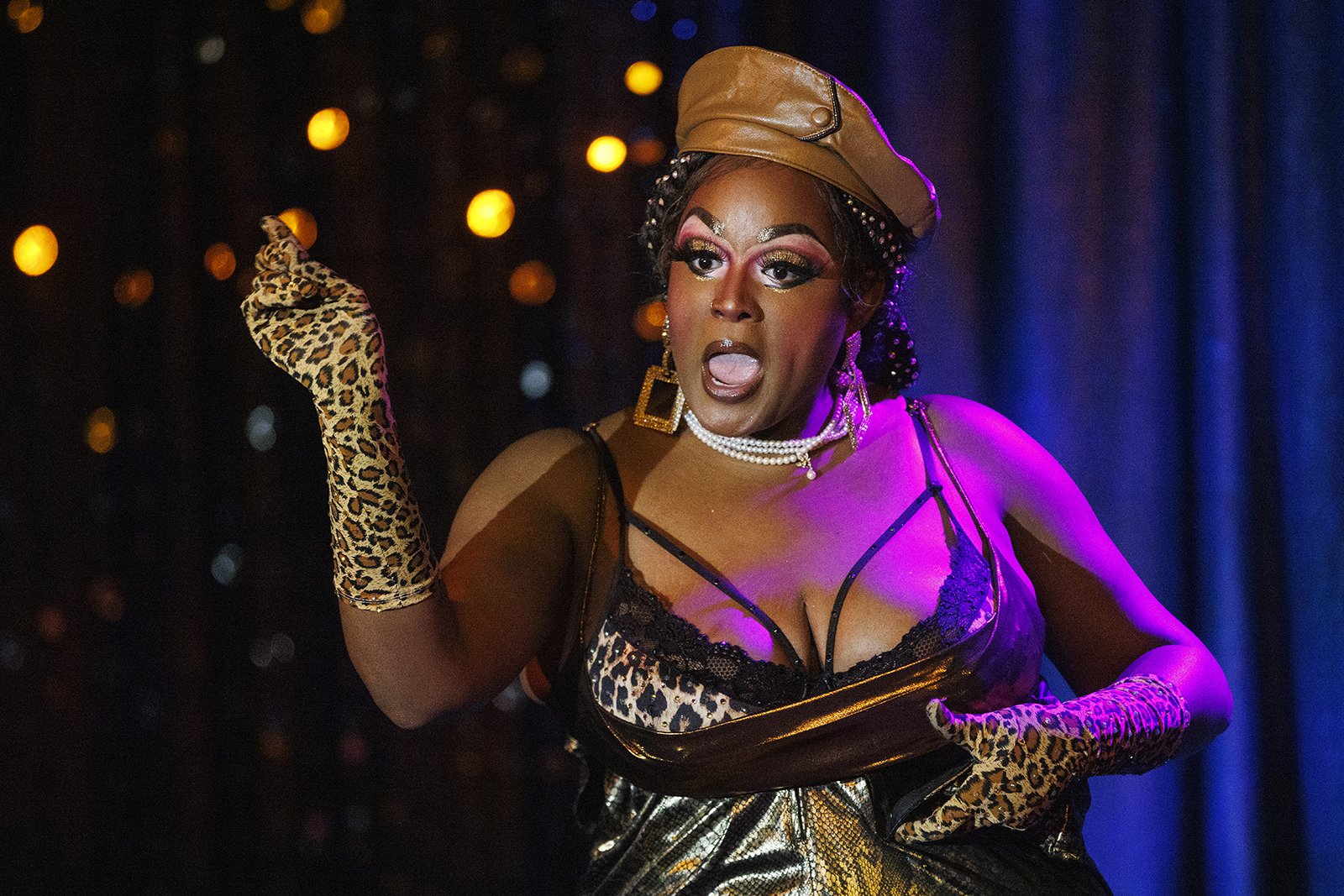
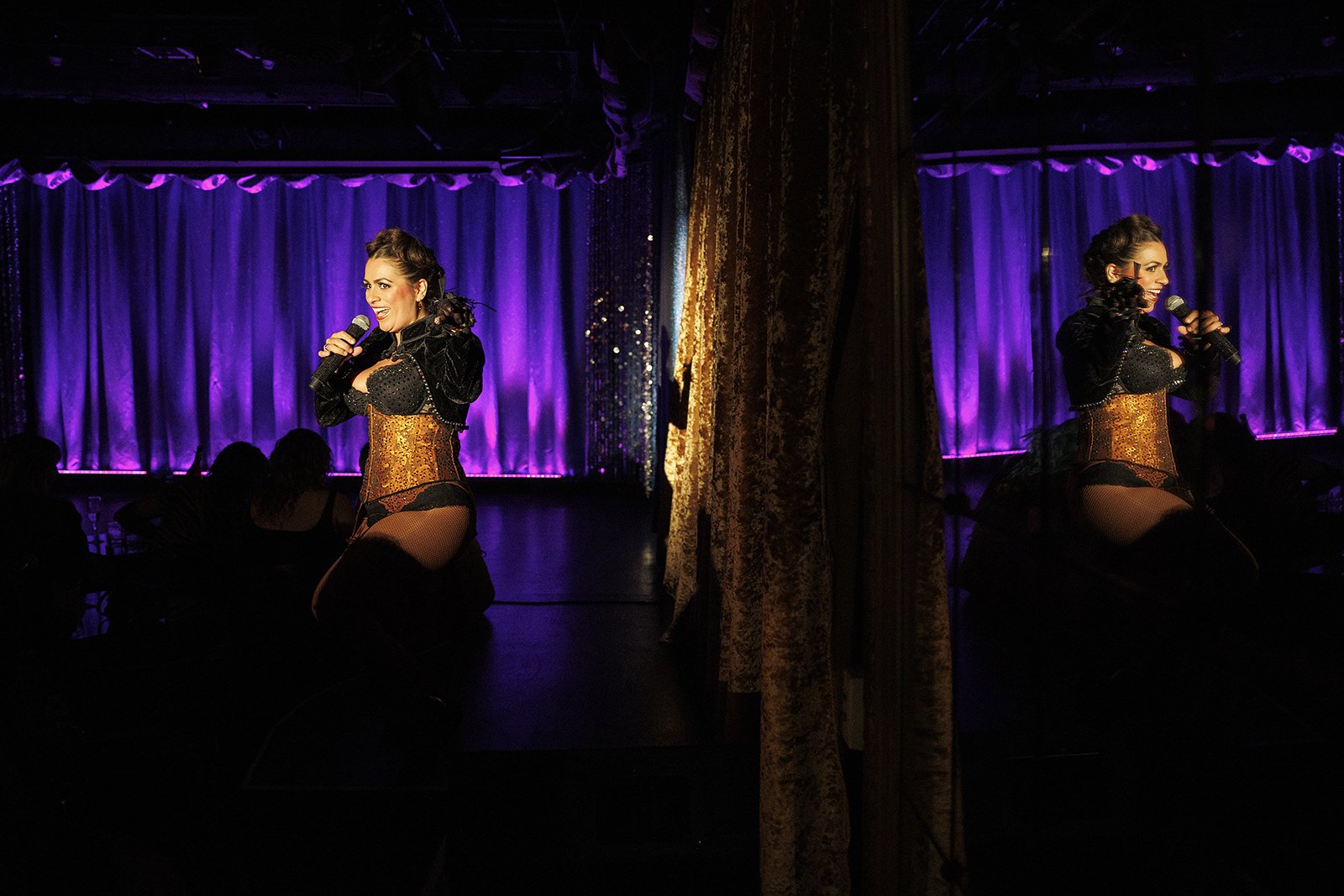

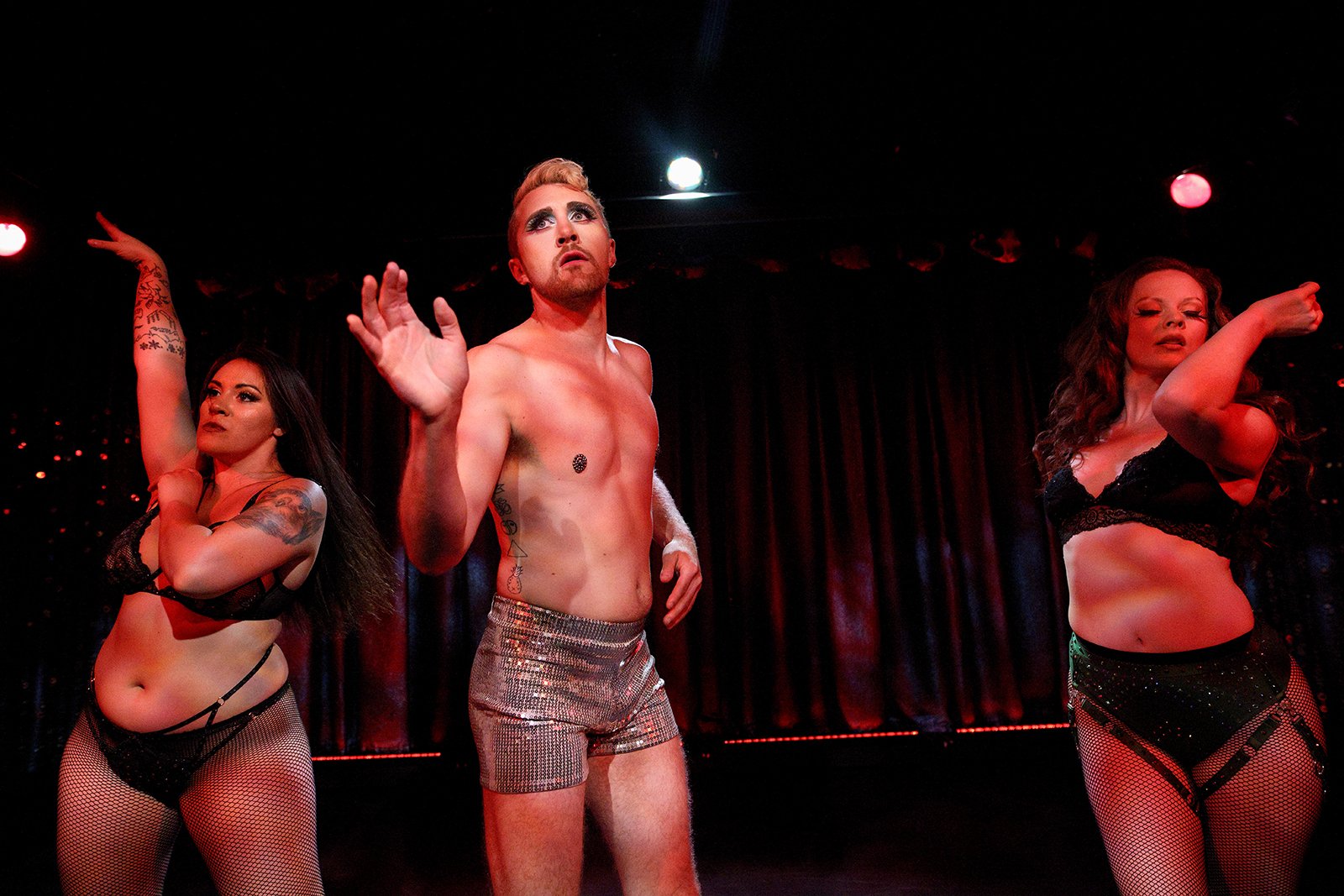
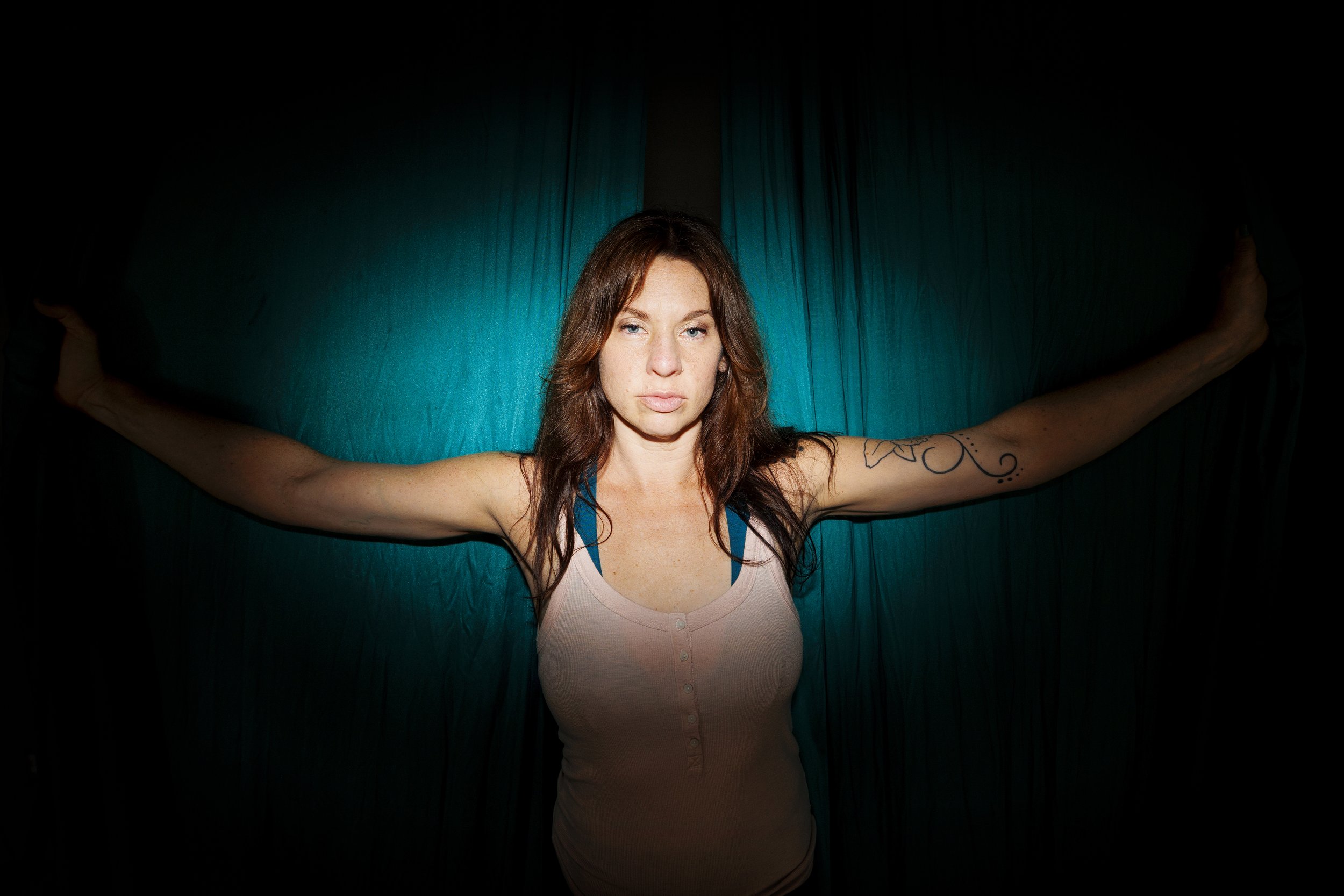
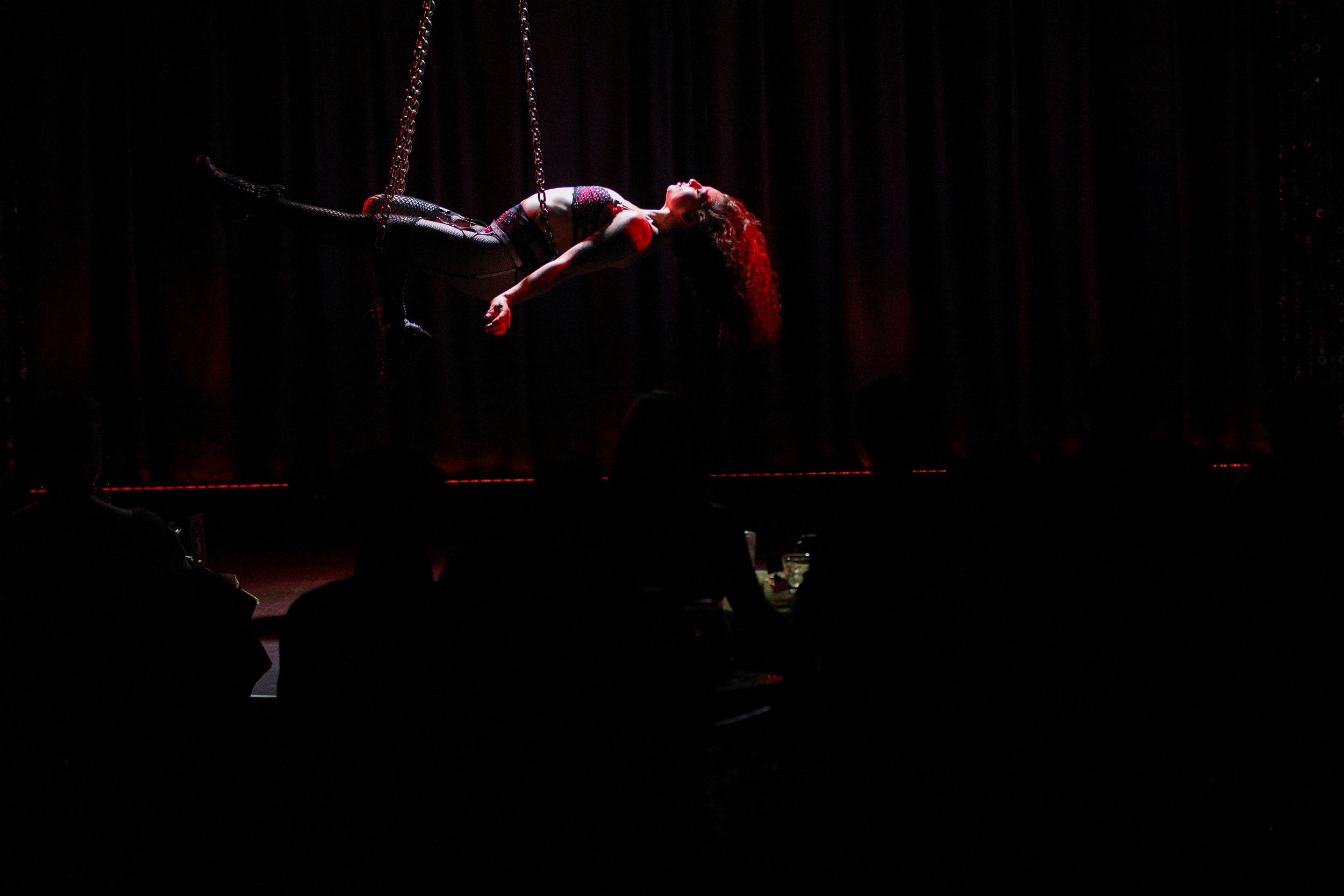
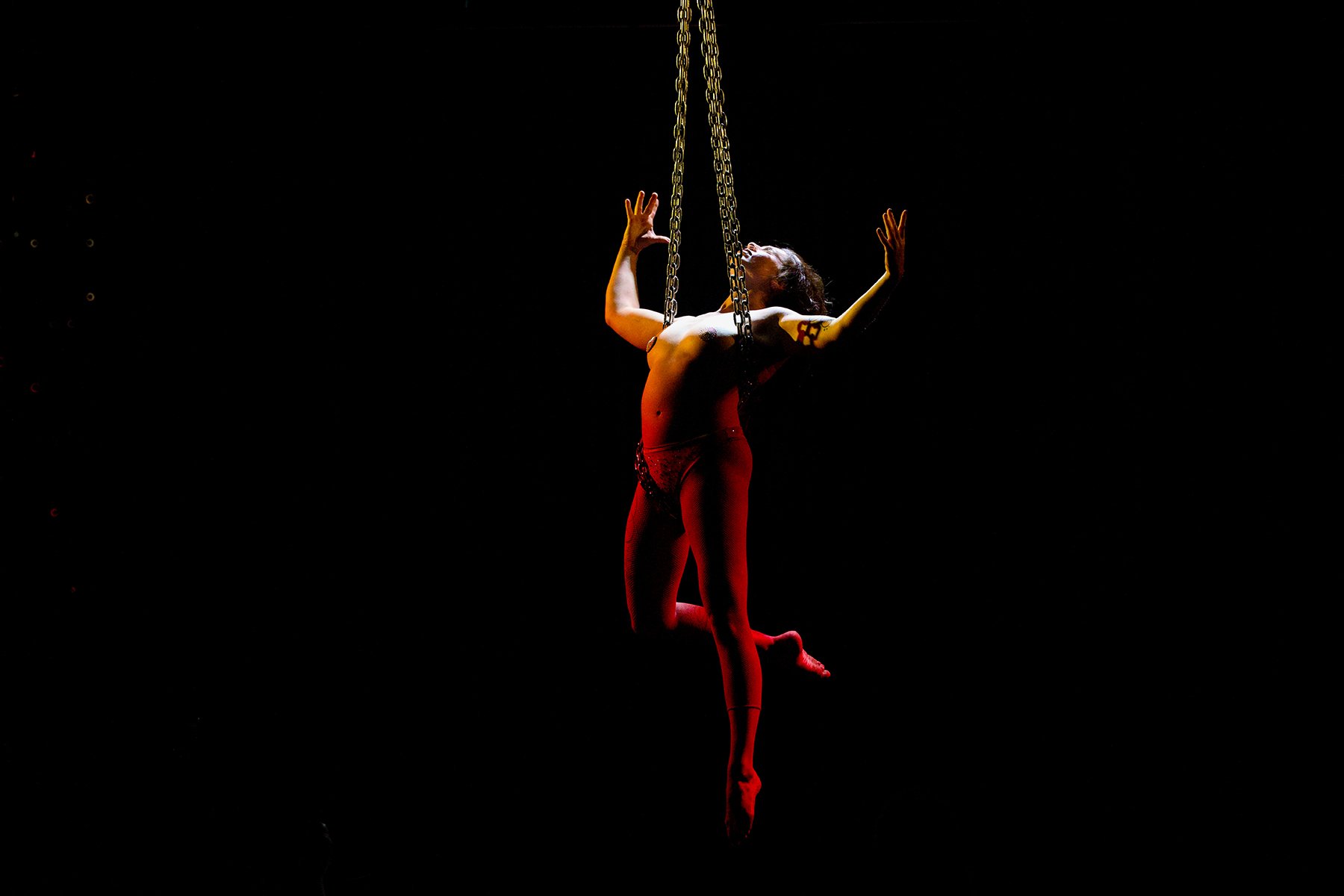
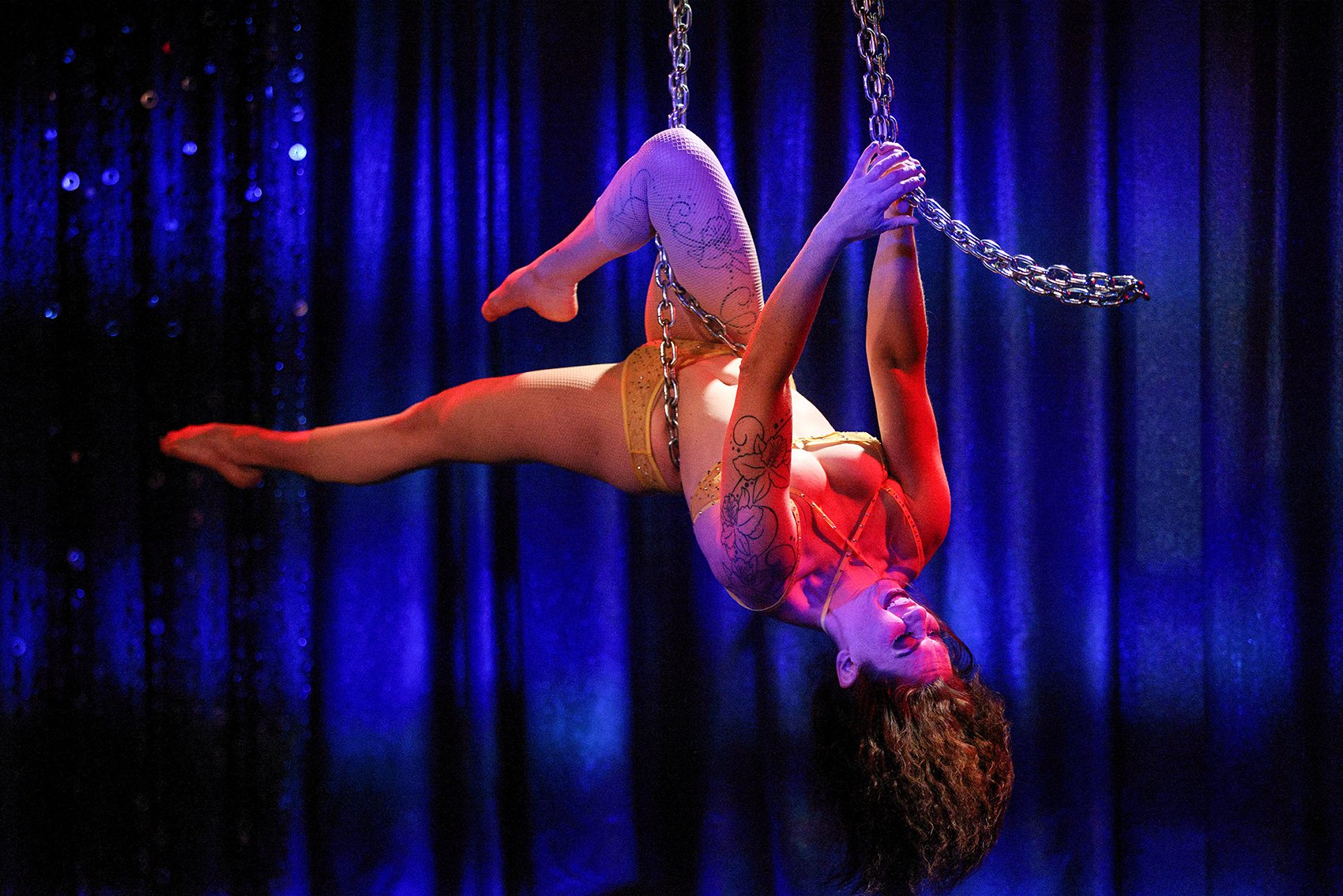
Arca owns The Clocktower Cabaret with her husband Jeff Arca, and the two have been including subtle and not-so-subtle messages about acceptance, empowerment, and diversity since they took ownership of the venue.
As the original MC and a writer for The Clocktower Cabaret, Jeff Arca helped set the tone for the theater, as it was finding its identity. Some cabaret performances are all fun and undressing. The Arcas realized burlesque could be something more.
The performers at The Clocktower Cabaret are a diverse group of individuals and body styles, who bring different dance genres, messages, and motivations to the stage.
To Ande Sailer, who performs at The Clocktower as Bender Flames, burlesque can help bring personal change for those who see the show and also may help push communities toward a wider acceptance of all people.
“I think people have a very narrow idea of what change is,” Sailer said. “Often, people think change is this big, crazy, and sexy thing. But, I think change is something that happens in small incremental steps. Over time, it adds up, and you look back and see how you were different or how society was different years ago, and that can be mind-blowing.”
Burlesque is an art form that blends satire, comedy, and provocation with extravagant costumes, dance, and strip tease. Sailer simply describes The Clocktower performances to his audiences as “a bunch of former theater kids taking their clothes off.”
Sailer, who is gay, said he tries to be his authentic self on and off the stage. It wasn’t always safe for the LGBTQ+ community to be out, and there are environments where it still isn’t completely safe. But Sailer said he feels he can be
himself because if there is pushback to his being queer, there is a whole community in Denver that supports him.
“I’ve been given acceptable space as a white cisgendered gay man because of what others fought for,” Sailer said. “I think my role now is to push that space [to be] big as possible. Our job then is to help make room for those that haven’t been accepted yet.”
These heavy ideas don’t weigh down the shows at The Clocktower. If anything, they enhance the fun.
Sailer often tells audiences about Marsha P. Johnson, who many credit with throwing the first brick at the Stonewall Riots. Sailer follows this up by pointing out that a pink cloth, draped on the stage, looks like a clitoris. He jokes that he could be wrong about that, given that he has never actually seen one.
The audience eats it up cheering, laughing, and screaming – pulled in by a whiz-bang of bright colors, humorcand movement.
Sailer is ready to find off-color humor about anything, at a moment’s notice. He is known to walk into the crowd, which is usually predominantly women, who are at the show to celebrate bachelorette parties, birthdays, anniversaries, and divorces.
During one show, Sailer asked an audience member celebrating a birthday how old she was. When the person told him she was 69, Sailer’s face lit up with glee before he went on to make an adult-themed joke. He then asked the next person celebrating their birthday, who was clearly in their 20s, if they, too, were turning the magical age of 69.
The Clocktower’s message isn’t only about challenging perceptions and accepting others. It is also about self-acceptance. Some of the performers have bodies Hollywood might idealize. Others have bodies that are less “Hollywood.” But at The Clocktower Cabaret, all bodies are celebrated as sexy.
The message of encouragement, acceptance, and creative expression is deeply personal to Marguerite Endsley. Endsley, who performs as an aerialist at The Clocktower, swings from chains, poles, and silks hanging from the ceiling.
Endsley’s background is in tap and hip-hop dance, and she worked as a professional dancer, teacher, and choreographer in Los Angeles. She happened upon pole dancing after a night out with friends at a strip club.
“I remember [being at the club] thinking, ‘That’s so cool, I want to do that someday,’” Endsley said.
She couldn’t get pole dancing out of her head. It wasn’t that she was drawn to stripping, but instead, Endsley was fascinated by the form and strength of the performance. Endsley talked with her boyfriend about her desire to learn to pole dance.
His response was discouraging and blunt. “You’re not strong enough to do that.”
“I just heard that I couldn’t do it. I believed that. It stuck with me. I still think about that today,” Endsley said.
The call to learn something new only grew louder for Endsley. She and her boyfriend broke up, and Endsley took up a new art form.
Shortly after she moved to Denver, Endsley went with a friend to The Clocktower. Inspired by the show, Endsley wanted to bring her aerialist skills to the stage, and she began performing at The Clocktower not long after.
“As I evolved here, I started seeing not only just what was on stage but who [was] backstage, that there’s a community, there’s forgiveness and acceptance,” Endsley said. “It helps me feel strong and powerful because everyone’s really supportive.”
Many of the acts at The Clocktower are developed in Endsley’s backyard dance studio. She helps other performers learn to be aerialists or develop new choreography. Endsley also teaches adult dance classes at her business, Denver Dance.
Endsley sees the shared purpose of the performers reciprocate with the audience.
“When you’re on stage, it’s the crowd that brings something really powerful,” Endsley said. “When they’re screaming and they’re having a good time, there’s something in me that gets lit up even more.”
Endsley believes that when the audience sees her swinging from chains or another artist belly dancing, or any other performance, it arouses a “you can do it attitude” in the audience.
After each show, The Clocktower Cabaret performers walk off stage to talk with the audience. Most nights,
someone in the crowd shares how the performances embolden them. Some go one step further and ask how they, too, can learn to do burlesque or become an aerialist.
“I think [audiences] love us because we’re celebrating each other and celebrating all of our differences and the things that we have the same, which is these weird, awkward bodies that don’t need to be hidden and don’t need to be something that people feel ashamed of,” Selene Arca said.
Visit The Clocktower’s website to learn more about the venue or its upcoming shows, https://www.clocktowercabaret.com.

